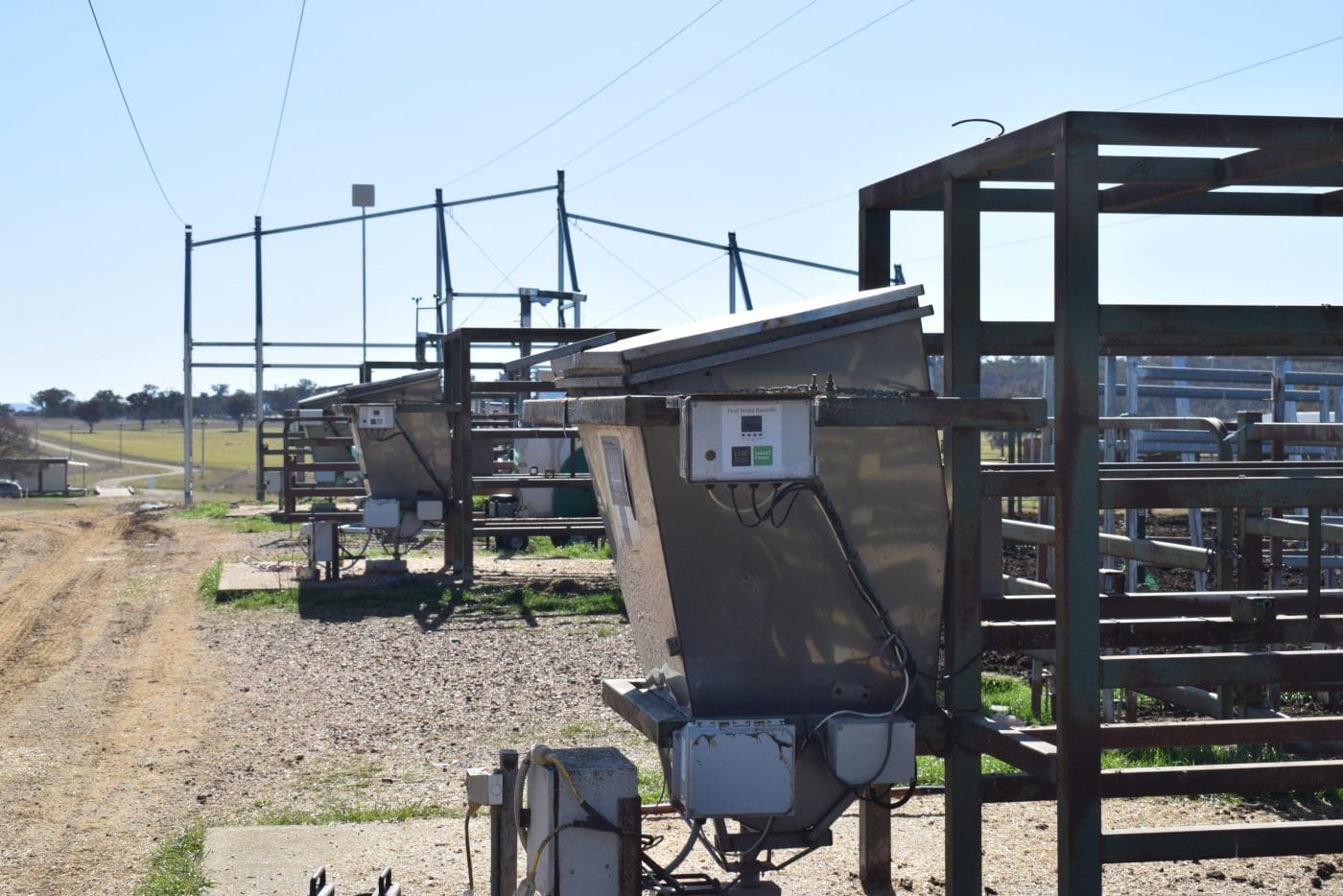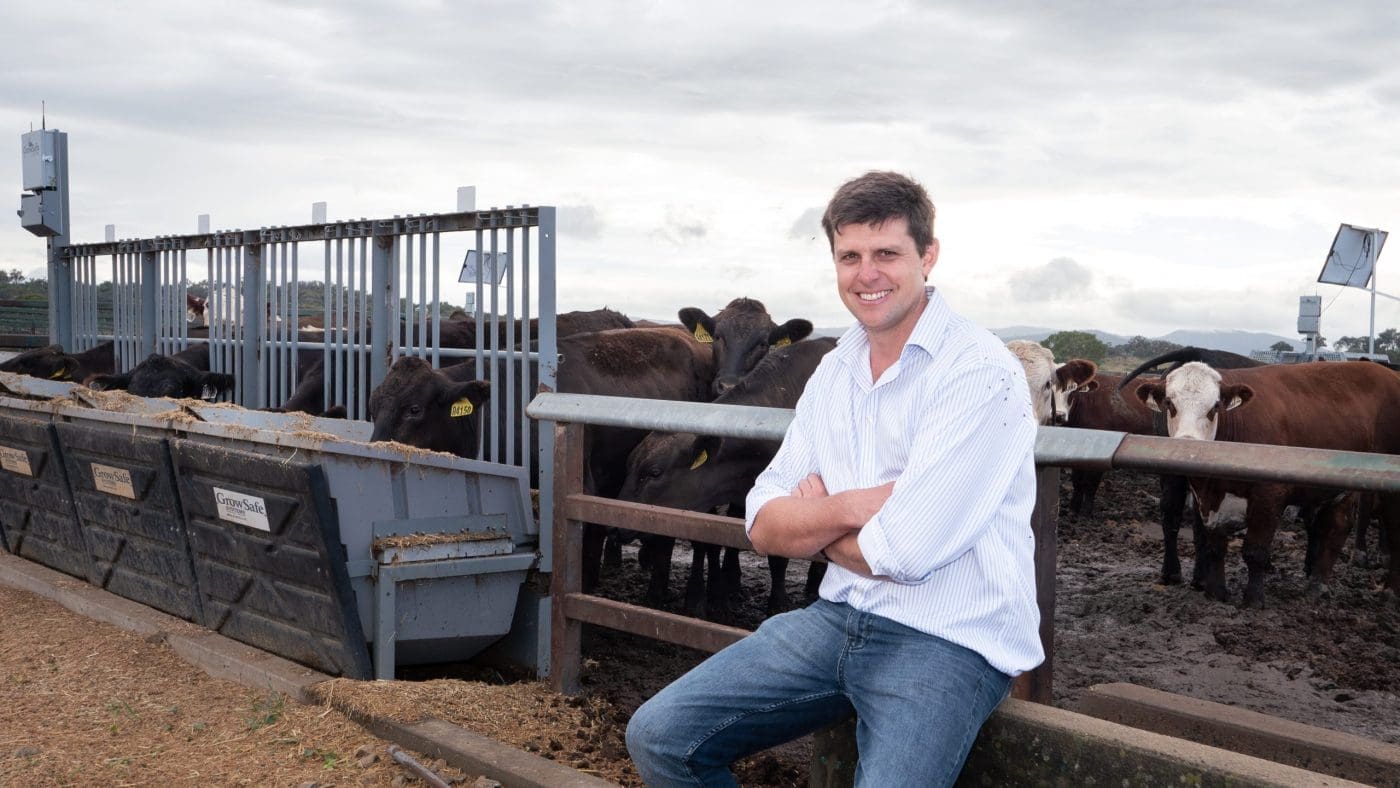A RESEARCHER examining the genetics of livestock-related methane says the results of the study could have more benefits than emissions reduction – giving producers the ability to select more productive cattle.
Dr Sam Clark from the University of New England gave last week’s Angus Australia conference an update on the $15m project, which is a collaboration between UNE, Angus, New South Wales Department of Primary Industries and Meat & Livestock Australia.
The first year of the study has involved testing the methane output of large numbers of animals in both feedlot and pasture systems. Animals across all breeds have been used, with a specific Angus program and the Southern multi-breed program.
All the animals in the study are being genotyped, with the aim of providing genomic selection tools for the low emitting genetics.
Dr Clark said while methane had been studied for many decades, there had never been this much measurement on a large scale.
“The goal was to set out and have four years of recording, with large numbers of animals across multiple breeds,” he said.
“What we are recording on those animals is methane, hydrogen and feed intake. We have nearly recorded 1000 steers for methane output and about 700 heifers, which have been on pasture.”
Variation of results needed
Dr Clark said the methane output in the research herd was extremely varied, which was one of the key points of the study.
“Having a large population is key to this, because we need a variation of results to find what we are looking for,” he said.
“We want to find to find those animals that are producing less methane and they do exist.”
Dr Clark said the early results had found a significant difference in the methane output of animals on different pastures.
“We have done four different sites in many different environments – we have the north coast, the west of Sydney and Trangie,” he said.
“In the north coast where there is a lot of tropical pasture, they produce a lot of methane. Whereas Trangie they were on oats, they get different levels of methane and still a big variation in output.”
Some limitations on measurement
The project is using 18 green-feed monitoring machines, which are basically feeders that measure methane output when the animals are eating. Dr Clark said the way methane is measured could be improved.

Green Feed Emissions Monitoring machines at the University of New England’s Tullimba feedlot. Click to enlarge
“These machines are extremely expensive pieces of equipment, and it took us a long time and a lot of negotiation to get them into the country,” he said.
“If anybody is looking for a new tech idea, I think a methane measurement tool would be a great one – so we can have more animals measured and greater variation of results.”
Dr Clark said the researchers were also looking improve the way it trains animals to use the machines.
“Sometimes a cow does not want to put its head in the box and it is hard to change its mind when it has made that decision,” he said,
“But we are working through those issues, building training units and working on management of groups of animals – because some animals love to eat and will do anything to protect it.”
Major potential for the industry
Dr Clark said genetic solutions to reducing methane output had potential to significantly benefit the industry in the long-term.
“We can use feed additives to reduce emissions and they are a useful tool for the industry to look at in the short-term because as you use the additive they start to work,” he said.
“But even if they work well they will come at a financial cost, which is where genetics fits in. If we can make long-term genetic progress and re-design the animals you run to have lower emissions naturally, it saves on that cost.”
Dr Clark said the group was keen to find out some of the flow on benefits of reducing methane.
“We are taking an academic approach and trying to find out some more about the rumen and what role it has in producing methane,” he said.
“I think methane is an opportunity to get energy to stay in the cow, we want to use that energy and turn it into beef.”


Are the differences being observed to-date genuine differences in the metabolic rate of methane production, or are they simply associated with (genetic) differences in net feed intake (NFI)?
Either way, just as the Beef CRC’s Maternal Efficiency Project found negative correlations between NFI and maternal reproductive efficiency (kg calf weaned/ MJ ME consumed), I hope similar investigations are underway or being planned to ensure selection for lower methane production will not adversely impact maternal reproductive efficiency over time.
That would be a deleterious outcome for beef breeders and the industry more broadly.
Evidence suggests that the Limousin breed that carry the F94L gene have higher feed efficiency and lower fat content which has a direct reduction in methane production. Research in Ireland strongly supports this view.